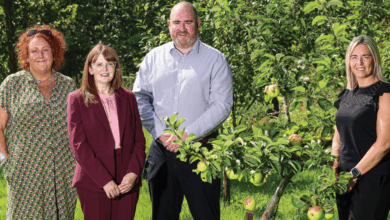 Tackling fraud will free up homes for the most vulnerable people in society.
Tackling fraud will free up homes for the most vulnerable people in society.
Fraud is keeping up to 2,400 vulnerable families out of a stable home, a hard-hitting report from the Northern Ireland Audit Office has found. Social housing tenancy fraud includes giving false information in an application, abandoning a property and sub-letting a property for profit.
The crime affects an estimated 2 per cent of social homes in England. The 2,400 figure is calculated by applying the same estimate to social housing in Northern Ireland.
Each year, around 3,000 people need to be placed into temporary accommodation (mostly private rented housing) because no home can be found for them. The main causes of this homelessness include health problems, low incomes and intimidation. If all fraudulent properties were recovered, most of these tenants could be moved into a more secure home.
In a forthright summary, Auditor-General Kieran Donnelly said: “Public funded housing occupied by individuals not entitled to be there is illegal, immoral and unacceptable.” The human cost is most important but the financial cost of temporary accommodation has also doubled during the economic downturn: from £5.2 million in 2008 to £10.5 million in 2012.
In one case, a housing association tenant claimed a flat by using the details of her deceased mother. In another case, the tenant lived in a new flat for about four months but then abandoned it without contacting the Housing Executive.
Donnelly notes that the Housing Executive and housing associations did recover 363 properties in 2011-2012 but there is a widespread acceptance that more must be done. The Audit Office recommends that the sector adopts best practice from England.
Proposals include:
• more training for housing staff in how to notice fraud;
• a confidential hotline;
• a single tenancy fraud team (responsible for investigations);
• taking digital photographs of new tenants; and
• using the Fraud Act to prosecute fraudsters.
The Act covers false representation, failing to disclose information and abuse of position. English housing authorities have started to use credit reference agencies to compare tenants’ records with mortgage, loan and credit card information. The Audit Office also suggested a formal protocol to allow utility companies to share information with social housing providers i.e. to show if a house is being lived in or not.
District office staff in the Housing Executive supported the idea of an investigative team and would welcome more training. Front-line staff work in a “challenging environment” and the Audit Office wants to see more leadership and support from managers – and also the Department for Social Development. The number of suspected frauds and the outcomes of investigations should also be routinely reported to senior managers and the Housing Executive board.





